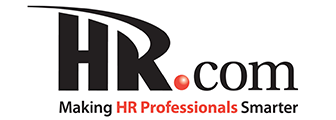Jenn Labin, author of Mentoring Programs That Work and MentorcliQ’s Chief Diversity Officer shares why increasing women in leadership roles is critical, now more than ever as companies look to create more diverse, equitable and inclusive workplace cultures. See how companies Avaya, Bacardi and Cardinal Health are inspiring advocacy, helping women move up and increasing the percentage of women leaders in their organizations.
Are Women Still Underrepresented In Leadership Roles?
Yes. While the percentage of women in leadership positions has increased over the last decade, women are still underrepresented in leadership roles. Women make up just over half of the United States population but, McKinsey estimates that 28 percent of senior vice president positions are held by women and a mere 21 percent of c-suite level positions are held by women. Of the Fortune500, only 8.2 percent, have female CEO’s.
Why Should Companies Be Cultivating More Women In Leadership?
- Profitability. Companies with gender-diverse leadership are four times more likely to have sustained profitable growth over time.
- Culture. Companies with strong gender diversity are five times more likely to work across an organization’s silos and exhibit a culture of growth.
- Innovation. Companies with greater gender diversity in leadership are twice as likely to have their leaders work together to create new solutions and opportunities.
What Can Companies Do To Make Progress?
More Mentoring. We learn best from experiences and from others and mentoring combines both of these. The power of mentoring is better than any other tool that we have; it helps people reach their full potential. Companies are making progress towards engaging and developing their female talent and much of this progress is a result of talent development programs that include mentoring. Mentoring boosts the visibility of women with senior leadership and assists in the upward trajectory of high-potential female talent to leadership roles.
How Are Companies REALLY Doing This?
Below are some best practices from companies that aim to create a more diverse and inclusive workforce. These organizations are supporting the growth and development of their female talent through mentoring.
Avaya, a multinational technology company, established their Women’s Inspired Network which aims to build advocacy across the business as well as build personal opportunities for female representation. The empowerment of women is good for everyone and putting strong emphasis on allyship and inclusion has helped their strategy evolve over time as transforming differences into strengths is paramount to their success. In order to turn their ideas into action, Avaya listened to their employees about what was important to them and used that as a framework to create this mentoring program.
Results:
Avaya is breaking down silos, building connections, and removing geographic boundaries that previously existed, creating a more diverse, engaged and connected global culture.
Bacardi, the world’s largest privately held spirits company, established their Women in Leadership program to support their people-first approach to talent development and growth. While the focus of their program is to help women leaders, inclusivity and allyship is important as part of the program. As a best practice for building allyship at least half of the mentors in Bacardi’s program are men. Men serve as mentors because the program has always advocated that men need to be part of the conversations and programs related to women empowerment and advancement in the workplace.
Results:
Bacardi’s investment in Women in Leadership has paid off as 86% of female participants have had a promotion or lateral move in the last 3 years.
Cardinal Health, a Fortune 50 multinational healthcare services company, uses mentoring as a key element to its global talent management strategy. Their WIN (Women In Leadership) mentoring program connects women to foster partnerships. Making Cardinal Health a great place for women to work, feel supported in an inclusive culture, and have the ability to grow professionally while enjoying their work and making meaningful contributions. Primarily focused on diversity, inclusion, and equity, the program has helped support strong female leadership by connecting people across geographies, job grade levels, and people from different backgrounds and experiences.
Results:
At Cardinal Health, women now make up 46% of key leadership roles which helps the company build a sustainable competitive advantage.




